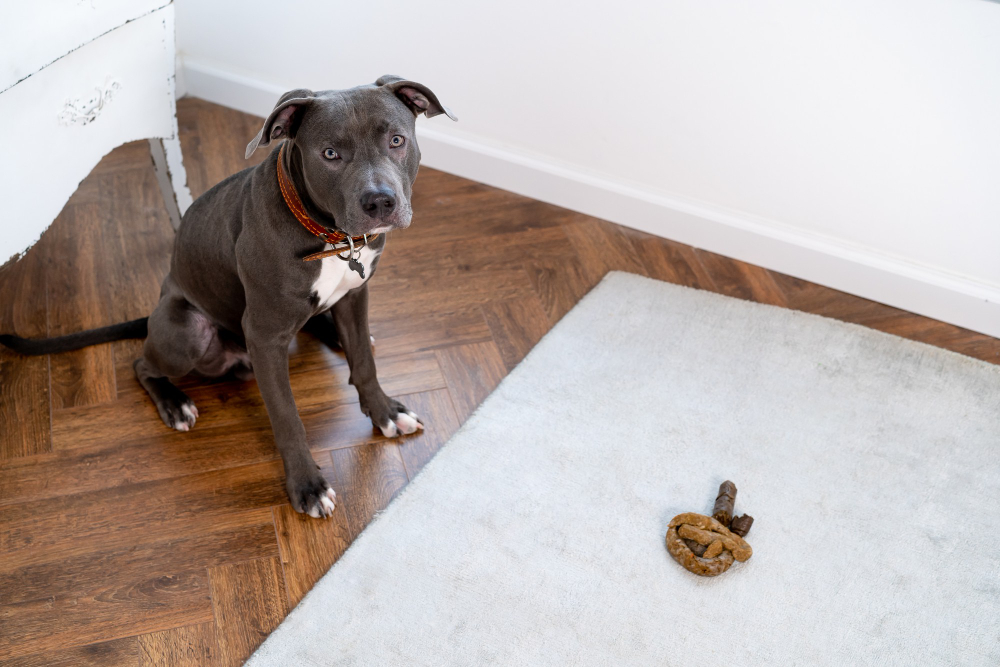Well, the same case would apply to the saying, “You are what you eat.” This goes for our pets too. It might sound pretty disgusting, but analyzing your dog’s feces is a part of taking care of your pet. They cannot talk to us when they are feeling unwell, unlike humans. Of course, behavior does give some telltale signs, but not all health issues are going to come out in a noticeable difference in behavior. Therefore, looking at the feces and the urine happens to be one of the most reliable ways to gauge whether the dog is healthy or not. The following will take you through the different signs that may manifest a problem and what each characteristic of your dog’s feces stands for.
Four Characteristics of Key Importance
However, before delving into the particular characteristics, it is noteworthy to highlight the importance of four aspects—color, consistency, content, and coating—in evaluating the fecal health of your dog. Each of these elements can work as a diagnostic tool and give you clues to various potential health issues. Monitoring these four features regularly allows for the detection of early warning signs of trouble, often before other symptoms even have a chance to show up. So, let’s get into them in a more detailed way.
Color: The First Indicator
Ideally, healthy dog feces should be a chocolate-brown color overall, which is due to the pigment stercobilin. So, a different color could really be an indicator for some health problems. In the following paragraphs, we are going to give some possible causes of stool appearance in dogs.
Consistency: The Texture Tells a Tale
It should be formed and not firm. Loose or unformed stool can be the result of malabsorption of nutrients. This is when the stool is actually hard; this is a good indication that the dog might be suffering from dehydration. If the change in the feces persists over a period of time, it is advisable to consult a vet.
Content: What’s Inside Counts
All the content inside must be of uniform nature. However, if other inclusions such as toy pieces, hair, or even worms are found, then it becomes a matter of big concern. The rest of the inclusions can vary from indications of parasitic infections to ingestion of indigestible objects.
Coating: The Lack with a Presence
Healthy dog stools are not covered or coated with anything around them. Mucus or blood is not something healthy stools would have—so much so that if it is present, it is something that warrants immediate veterinary attention.
Understanding Color Changes in Stools for Dogs
Now, this being understood, before we can get into the colors you might actually find, it’s really important to know why the color changes in your dog’s feces are even important. The stool color changes can give you signs about a number of issues from minor diet changes to serious gastrointestinal conditions. Since the color changes may suggest underlying health conditions, knowing those changes may help one intervene at the right time and perhaps save from worse health problems. Now, let’s have a look at what different colors could mean.
Black Stools: A Red Flag
Frequently, blood from the upper gastrointestinal tract has found its way through to soft, black feces. This might be caused by a number of problems, with stomach ulcers being the most common.
Green Stools: More Than Just Grass
Green feces could be a sign of parasitic infections like giardia. However, it could also signify that your dog has ingested a lot of grass. An allergy to food could be the cause in some cases.
Colored Stools: Diet
There are times when your dog will have discolored feces due to consuming certain foods such as carrots or beets. This is usually not a cause for concern, but if the color change does not go back to normal, calling a veterinarian may be the best thing to do.
When Stools Reveal More: Parasites and Foreign Objects
Parasites and foreign objects in your dog’s feces might be repugnant to imagine, but before we plunge into the repellent world of what else can be seen in your dog’s stool, it’s also important to recognize that sometimes what you see in the stool is more than just That is why such “extras” can be the scary signs of inside trouble that demand immediate attention. And, really, the reasons—from a parasitic infection to the swallowing of indigestible things—can be considered as quite extreme. So, let’s dwell on these concerns now.
Signs of Parasitic Infection
Dogs pass small, white, rice- or spaghetti-like worms in their feces, which is a sign that the animal has worms. All parasites will feed on essential nutrients, and so along with the destruction to the immune system, the general health of the host suffers. Have the stool sample analyzed and appropriately treated for deworming by your veterinarian.
The Perils of Ingested Toy Parts
Your dog is at risk of devastating health situations if she is allowed to carry on and destroy toys, then eat all the pieces. The safe alternatives include having more durable toys or giving a raw bone.
Conclusion: Fecal Observational Diagnostic Power
It’s not just about feeding and walking the dog; that would be too easy. It’s also about staying attuned to the general well-being of your pet. In fact, through monitoring stool, a dog owner can get useful diagnostic information and warning signs of a potential problem early on. Everything from color, content, consistency, and coating of poop says a lot about the dog’s health inside. Anomalies such as parasites or foreign material in the stool should be an immediate reason to visit a vet. So, take a little bit of extra time to do the mundane things that seem to be like do-no-good, and ensure a healthier and happier life for man’s best friend. After all, when it comes to your dog’s health, everything is important.

